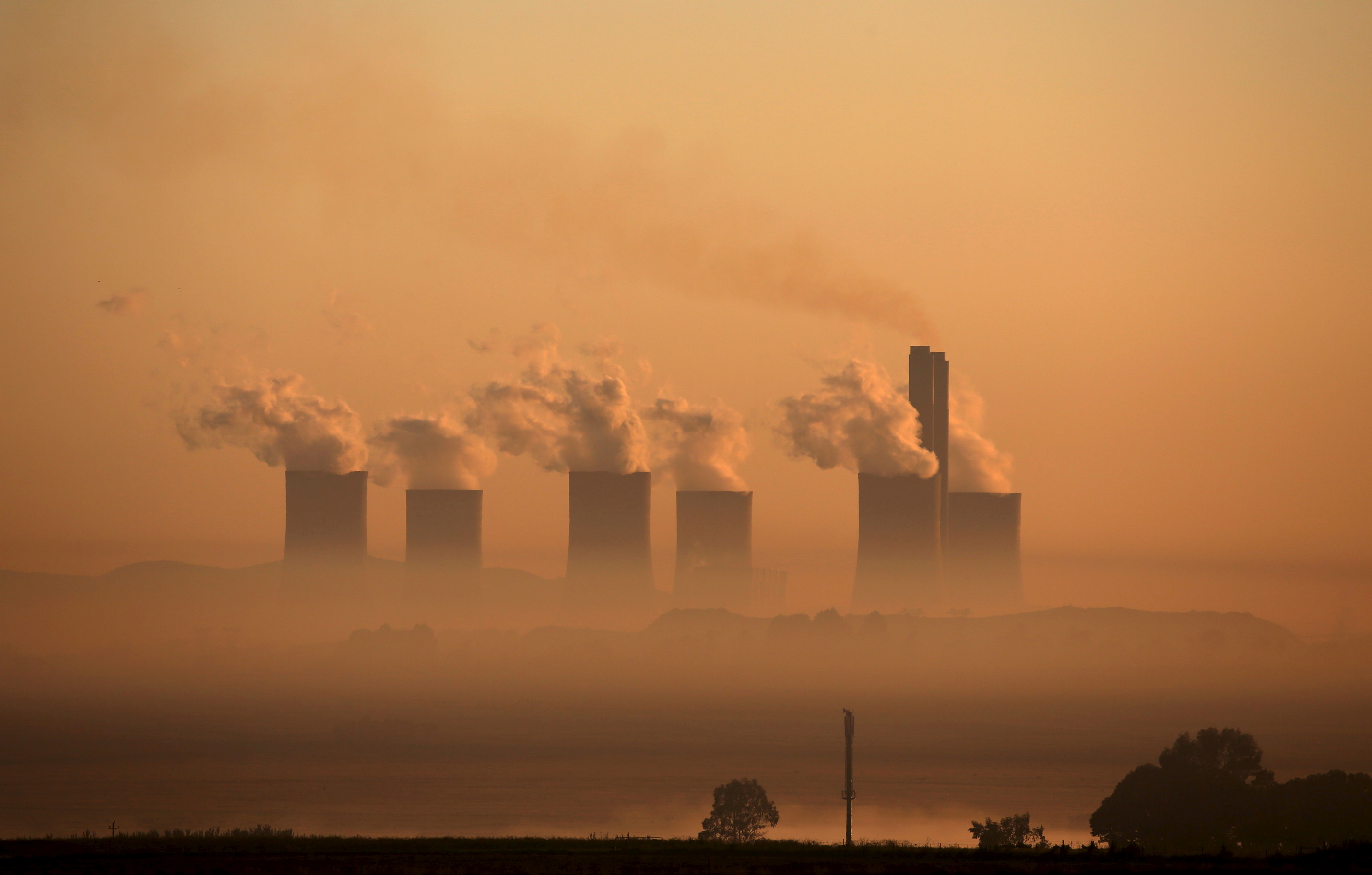News
Fixing Eskom: Home Truths and Unavoidable Actions
Continuing to craft clever ways to fund the dysfunction can only lead to one result: an economic disaster for the fiscus and for future growth.

Director, The Brenthurst Foundation

Research Director, The Brenthurst Foundation

Acknowledging that the core problems in Eskom spring from broken generation and that the solution is to lose the unproductive and attract the skills, investment and expertise to sort out the existing fleet, is crucial to turning Eskom around.
It is late in the day, but there is, at last, an energetic focus from government and other players on finding a solution to Eskom’s problems. There is finally a general consensus that the power utility — once regarded as the country’s greatest state asset — will drag the economy down with it should it continue its epic slide to bankruptcy.
These solutions inevitably hinge around taking on more debt — via the $11-billion UN renewable energy fund for example, or more scary, from the R1.8-trillion state pension scheme — to get Eskom out of its current dire situation, with (South African) promises to change its future energy mix in exchange.
The trouble is that solutions focused on restructuring debt or finding new money don’t deal with the problem: Eskom’s expensive electricity generation inefficiencies, which are the cause of the growing debt.
Can the government finally fix the Eskom problem? To make this judgment, it is necessary to appreciate five home truths. From this, an equal number of unavoidable key decisions have to be taken, without which Eskom (and likely South Africa’s short-term economy) is doomed.
Home truth one: Eskom is the key to the economy
The first home truth is that Eskom is costing the economy a vast amount of money. By the estimates of at least one highly respected person who worked there at senior management level, this amounts now to more than R600-billion in de-industrialisation since 2007 as intermittent energy supply led to the closure of many marginal manufacturing businesses and deterred new investment.
This may exceed the cost of State Capture — although Eskom’s decline eventually became intertwined with the project to capture state-owned enterprises.
No less an authority than the SA Reserve Bank cites load shedding as a primary cause of economic contraction and of growth. This from the latest Quarterly Bulletin:
“In South Africa, real economic activity rebounded in the second quarter of 2019, in the absence of the severe electricity-supply disruptions that hampered output in the first quarter of the year. Real gross domestic product (GDP) advanced at an annualised rate of 3.1% in the second quarter, after contracting by a similar magnitude in the previous quarter. The rebound was broad-based with real output increasing in the primary, secondary and tertiary sectors.”
To put the events of the first quarter in perspective, the Reserve Bank has created a table which measures the intensity of load shedding’s effect on the economy by quarter. The worst quarter by far, measuring an intensity of 71, was the second quarter of 2015, when there 38 days of stage one load shedding, 15 of stage 2 and one of stage 3.
The second-worst quarter ever measured was the first quarter of 2019 where there was one day of stage one, seven days of stage two, two days of stage three and, five days of stage 4. This quarter registered at 41 on the Bank’s index. Although there were fewer days of load shedding, it was the first time that stage four had been invoked.
Home truth two: The risks are growing
What the events of the first quarter suggest is that the risk of the system falling over is higher than ever as the reserve margin — the electricity generating units held in reserve to manage a crisis on the grid — decreases.
With an election looming in the second quarter, the ANC woke up and the politicians did whatever they needed to — including using hyper-expensive diesel generation — to keep the lights on until voting day.
It is obviously unsustainable to continue using more costly power generation methods to keep the lights on and at some point, the coal-fired power stations will have to resume their duty in the absence of any alternative.
Government is about to hand over R23-billion to Eskom, but that will be soaked up by debt obligations and feeding the bloated payroll. There will be precious little money left for maintaining and improving the shaky power stations.
And to add insult to injury, the risk of units going down is growing in the absence of a major overhaul.
Home truth three: Eskom is a cap on growth
With the reserve margin being only one-third of what it ought to be, there is the risk of load shedding should something go wrong with generation.
As Sikonathi Mantshantsha recently wrote in a Daily Maverick article: “Currently, the utility has only 2,000 megawatts (MW) of spare capacity available to meet higher demand, said Jan Oberholzer, the chief operating officer. This is equivalent to less than 5% of Eskom’s 46,000MW total generating capacity. The normal practice is for electricity producers to keep spare capacity of 15% in order to meet any sudden spurt in demand. Eskom has less than three times this.”
But there is also the fact that should the economy grow at a rate higher than 1.5%, there won’t be enough extra power available to the grid to power that growth. We could find ourselves in the invidious position of load shedding due to economic expansion, especially in agriculture, manufacturing and mining, sectors which the Reserve Bank says load shedding has the greatest “regression results”.
President Cyril Ramaphosa is signalling that he is finally coming around to dealing with structural economic problems that are holding back growth. He has endorsed Finance Minister Tito Mboweni’s plan to revive the economy.
Others in his inner circle, such as investment envoy Mcebisi Jonas, have produced detailed suggestions of how economic activity can be stimulated, leading to growth and the absorption of unemployed youth.
But all these plans will come to naught if there is insufficient energy available to companies to expand production or to establish new businesses. This risk of an invisible “power cap” on the economy may be the single biggest factor holding back investment.
Home truth four: Poor technical capacity
Eskom is in the deep hole it is in now because it did not have the internal capacity to manage the two massive build programmes for the Medupi and Khusile power stations.
New builds, especially those on this scale, require financing skills, engineers with expertise in build management, contracting and the nitty-gritty of power station construction. Eskom lost these skills during the 1990s and 2000s.
But, instead of opting for “turnkey” solutions where a provider which had all these skills would contract for the building of the power stations and hand them over as finished products, Eskom persuaded itself that it could manage all the moving parts that go into these builds despite having lost these critical skills.
The result has been poor contracting and the inability to rein in spending. These power stations have experienced technical problems with boilers, cooling and many other basics of generation, but it is unclear who is liable. Did the contracted companies fail to build properly or were they merely carrying out poor specs given to them by Eskom? What role did corruption play in getting certain contracts signed?
The litany of problems from bad welding in the boilers to coal mills which do not meet technical specifications has plagued the power stations because of the absence of proper supervision and contract enforcement during the building.
Home truth five: Splitting up Eskom is not going to solve the problem
South Africa has finally decided it will follow global best practice by splitting Eskom into generation, transmission and distribution.
While this is a welcome move, it is not going to solve Eskom’s core problem. Generation makes up 85% of Eskom’s business and it is generation that must be fixed if electricity is to be more efficiently and cost-effectively produced.
The core focus of any Eskom rescue plan must be on fixing generation, increasing the reserve margin and decreasing the likelihood of unscheduled disruptions from units going offline by improving the maintenance of the power fleet.
What then must be done to fix Eskom? It should be abundantly clear that without a series of solutions that focus on sorting out the core business of Eskom — generation — any proposed solution will fail because it will not tackle the source of the trouble.
What is needed are a series of steps to reduce spending on things that don’t produce value and to direct money towards those things that make Eskom a more effective and less expensive producer of power.
Solution one: More engineers, not more debt
The caricature of Eskom’s problems as a financial one has got to stop. The cause of the financial problem must be tackled instead.
With debt at R450-billion (or R700-plus-billion if the Treasury’s sovereign liabilities to the power sector are included) and climbing, more debt is clearly not a good idea unless it can be demonstrated that these funds will alter the cost structure of Eskom.
Restructuring Eskom’s debt or seeking new, ever-more ingenious ways of propping up its balance sheet, is not going to solve Eskom’s problems. Some previously sober minds have gone so far as to suggest that the government pension fund should be raided to keep the ship afloat. If the money of ordinary South Africans must be used to keep a dysfunctional enterprise afloat the effect will be to widen inequality as elites continue to feed at the trough.
The danger is that throwing money at Eskom enables those who see it as a cash cow. Coal suppliers will continue to seek high-margin contracts, renewables will continue to be priced way beyond their costs and managers will hire more managers with no effect on productivity.
Eskom needs to instead direct its resources at sorting out the building and maintenance of its generation capacity. This requires eating some humble pie and aggressively seeking to get back lost technical, managerial, logistical and engineering skills that were carelessly cast aside during several rounds of restructuring over the past two decades. Old hands are needed, and Eskom needs to once more become an attractive place of employment for graduates in these fields.
Unless the disaster in maintenance and building is eradicated, Eskom will continue to eat into the future wealth of South Africa.
Solution two: Slash management
In 2007, Eskom employed 32,600 people. By March of 2017 — a decade later, it employed 47,600 people.

The increase in employees had no effect on output. In 2017, Eskom was producing the same amount of electricity in 2017 as it was back in 2003 — 14 years earlier, as reported by BizNews.
In 2017, Eskom was producing 0.72 megavolt amps per employee compared with 30.98 MVA per employee at Power Grid Corp of India, as reported by BusinessTech.
The surest way to free up money to reduce debt and deal with the technical issues in generation is by losing a lot of the unproductive staff, starting by paring down the utility’s “e band’ (executive) managers who are said to number some 650, earning in excess of R1-million a year. They once numbered only 200.
The days when Eskom could offer sheltered employment to the party faithful are over.
Solution three: You’re in a hole, stop digging
Eskom’s extremely expensive new builds, Medupi and Kusile, are said to be functioning at 50% capacity, which means that they are producing some of the most expensive — if not the most expensive — electricity ever generated because the cost of the builds has escalated.
Some 11 years after the commencement of construction on Kusile, it is only set to come online in 2023 at massive cost overruns and with growing questions about its design. It may never produce the 4,800MW on its name-plate, no matter the amount of money thrown at it.
The conventional wisdom is that these builds must be continued because so much has already been invested, but this is not necessarily the case.
In the words of Mike Rossouw in a Bloomberg article:
“They needed to basically call a halt to the whole project and do a reset—to go back into the contracts and the design and engineering. They never did that and haven’t at any stage and the consequences are there for all to see.”
The old saying “when you’re in a hole, stop digging” might be apt to describe this situation.
If construction and spending are halted and new contracts are signed for turnkey supply from new builders, it may well be possible to bring the same amount of power online at a much-improved level of efficiency.
The approach to Kusile and Medupi needs to be a ruthless “fix, sell or shut” decision that evaluates the cost of blundering on with the attendant risk of deadlines being broken and costs rising further.
Solution four: Reset the performance of the existing fleet
It may be a far better use of resources to pay attention to maximising the use of the existing fleet of power stations by paying attention to maintenance backlogs and modernising them to extend their lives and make them more reliable power producers.
The capital expenditure needed to build new stations from scratch is self-evidently higher than that needed to coax more power out of existing generators by improving and maintaining them properly.
Solution five: Reset renewables
The move from coal-powered to renewable energy is essential and will have a transformative effect on the environment. It could also bring down costs, but not if the government continues to pay a premium in guarantees to producers, pushing the price up instead of down.
Renewables do not have to be produced in a system where suppliers tie government up with expensive long-term contracts as is presently the case.
These contracts need to be renegotiated to reflect the fact that renewable energy is a cheaper solution.
Private energy production using renewable resources should be encouraged by reducing the regulatory burden and perhaps even incentivising such initiatives. This will have the effect of lessening the strain on the grid and allowing businesses to tailor-make their energy solutions depending on their needs and their circumstances.
Acknowledging that the core problems in Eskom spring from broken generation and that the solution is to lose the unproductive and attract the skills, investment and expertise to sort out the existing fleet, is crucial to turning Eskom around. Continuing to craft clever ways to fund the dysfunction can only lead to one result: an economic disaster for the fiscus and for future growth.
This article was originally published on The Daily Maverick.

